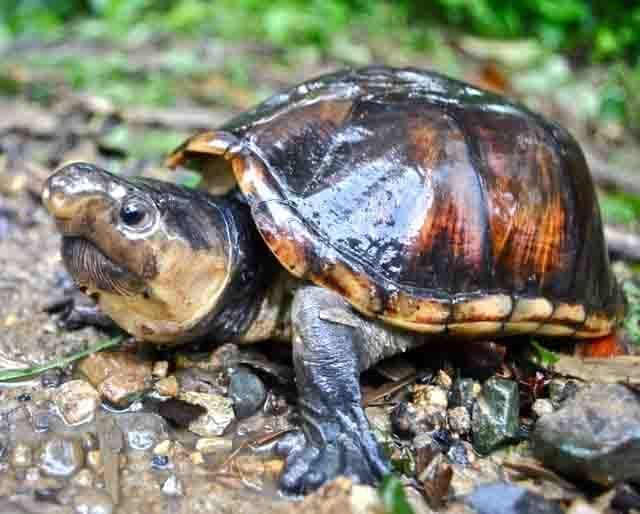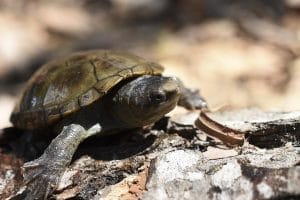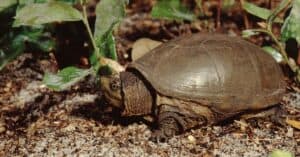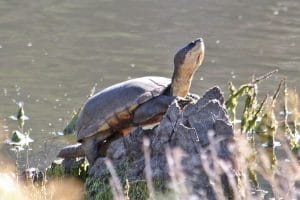Kinosternon dunni (Dunn’s Mud Turtle)
Home > Turtle Database > Kinosternon dunni (Dunn’s Mud Turtle)
Kinosternon dunni, commonly known as Dunn’s Mud Turtle, is a small freshwater turtle native to parts of Central America. Known for its elusive nature, this species thrives in aquatic environments and has distinct features that set it apart from other mud turtles.
Native To These Regions
Antioquia (Colombia), Chocó (Colombia)Native Turtle Species Map – Find Turtles by Region
Scientific Classification
Kingdom: Animalia
Phylum: Chordata
Class: Reptilia
Order: Testudines
Family: Kinosternidae
Genus: Kinosternon
Species: K. dunni
Common Names
Dunn’s Mud Turtle
This Hilarious Turtle Book Might Know Your Pet Better Than You Do
Let’s be real—most turtle care guides feel like reading a textbook written by a sleep-deprived zookeeper.
This one’s not that.
Told from the snarky point of view of a grumpy, judgmental turtle, 21 Turtle Truths You’ll Never Read in a Care Guide is packed with sarcasm, sass, and surprisingly useful insights.
And hey—you don’t have to commit to the whole thing just yet.
Grab 2 free truths from the ebook and get a taste of what your turtle really thinks about your setup, your food choices, and that weird plastic palm tree.
It’s funny, it’s honest, and if you’ve ever owned a turtle who glares at you like you’re the problem—you’ll feel seen.
Identification
Description
Dunn’s Mud Turtle is a small, dark-colored turtle with a smooth, oval-shaped carapace. The plastron is hinged, allowing it to close tightly for protection. The skin is dark brown to black, with some lighter markings on the head and neck.
Sexual Dimorphism
Males are slightly smaller than females and have longer, thicker tails. Males also exhibit a more concave plastron, while females have a flatter one.
Check more turtles from the Kinosternon genus
Native Origin and Distribution
Geographical Range
This species is native to parts of Central America, particularly in Colombia and adjacent regions. It inhabits freshwater bodies like rivers, ponds, and marshes in these areas.
Preferred Habitat
Dunn’s Mud Turtle prefers slow-moving or still freshwater environments. It is often found in shallow rivers, swamps, and seasonal ponds with abundant vegetation and muddy substrates.
Behavior
Feeding Habits
This turtle is omnivorous, feeding on small aquatic invertebrates, plant matter, and algae. It actively forages in the water and along the edges of its habitat.
Predators
Natural predators include larger aquatic animals like fish, crocodiles, and birds. Humans also pose a threat through habitat destruction.
Reproduction
Breeding Season
Breeding typically occurs during the wet season, when water levels are high, and food is abundant.
Reproductive Method
Females lay small clutches of eggs in moist, sandy areas near water. The incubation period varies depending on environmental conditions, particularly temperature and humidity.
Conservation
Extinction Status
Dunn’s Mud Turtle is classified as Vulnerable on the IUCN Red List.
Threats
The primary threats include habitat loss due to agriculture, urbanization, and water pollution. Illegal collection for the pet trade also poses a risk.
Conservation Measures
Conservation efforts focus on habitat protection, stricter regulations on trade, and education about the species’ ecological importance.
Economic Importance
Dunn’s Mud Turtle is occasionally collected for the pet trade but has limited economic impact. Its primary value lies in its role in maintaining healthy aquatic ecosystems.
Interesting Facts
Dunn’s Mud Turtle is named after American herpetologist Emmett Reid Dunn. Despite its small size, it has a strong defensive behavior, using its hinged plastron to tightly close its shell when threatened.

About Author
Muntaseer Rahman started keeping pet turtles back in 2013. He also owns the largest Turtle & Tortoise Facebook community in Bangladesh. These days he is mostly active on Facebook.















